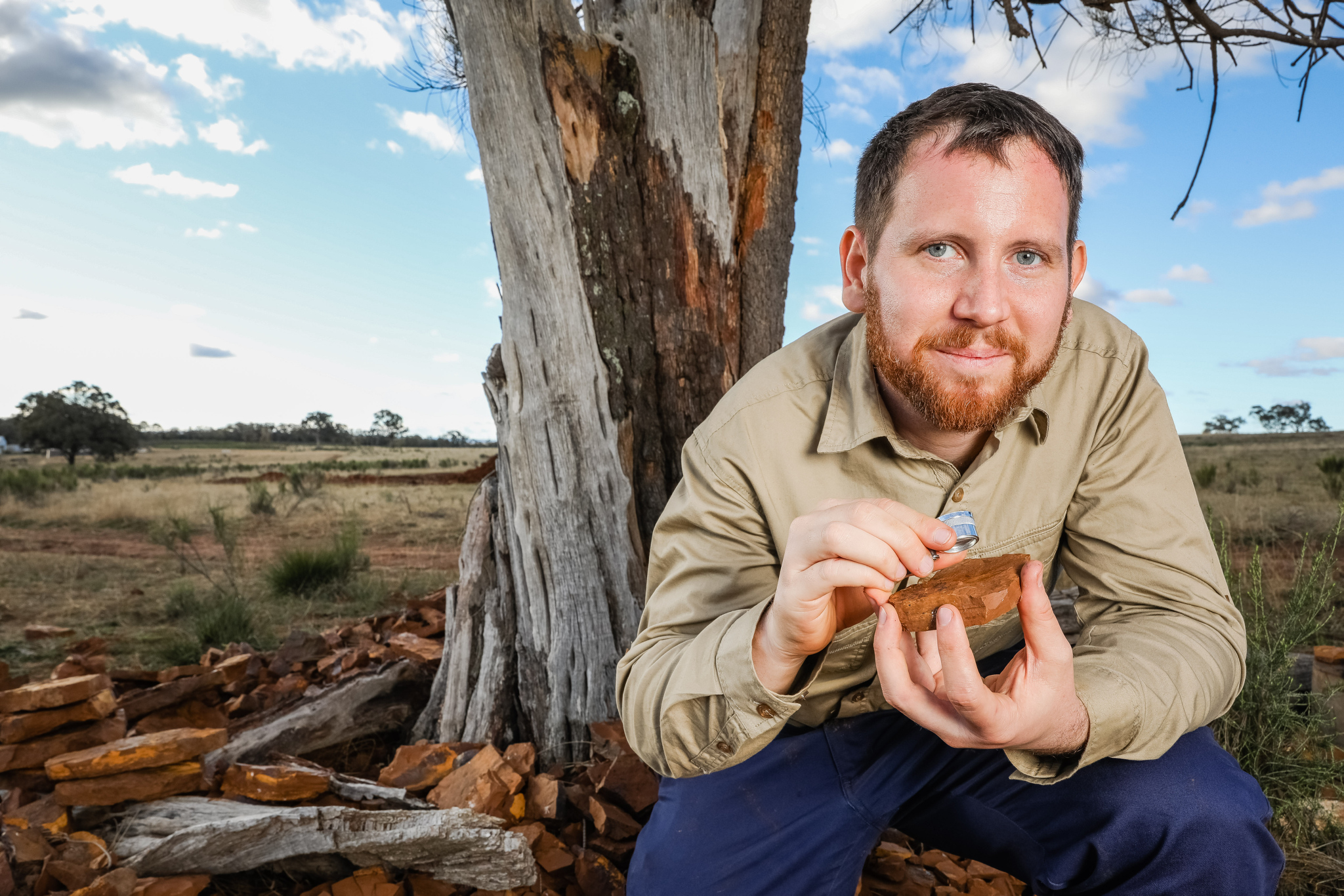A day in the life: A Palaeontologist
Find out how a Palaeontologist from the Australian Museum spends his day in this blog post.
Author: Dr Matthew McCurry, The Australian Museum
6:30am I wake up at my motel room in the town of Gulgong, NSW. I’m here with a team of scientists for a week to excavate a fossil site. I start my day by preparing lunch for the team – it isn’t anything fancy, just salami sandwiches and a thermos of coffee. I’m not much of a morning person so I find this one of the most difficult parts of the day.
7:00am The rest of the team gathers in the parking lot. The group includes experts from around Australia and a few volunteers. We jump in the cars and begin the drive out to the fossil site, only half an hour or so away. The drive is picturesque, passing farms and forests.
7:30am We arrive at the field site and start planning out the excavation. The site is nestled in a farmer’s property and doesn’t look very different to the farms we passed on the way, but we can see some rock outcropping at the surface. This layer of rock is where we have found fossils before, so we know we are in the right area.
This site is around 15 million years old – we know this because of the pollen we found within the sediments. The fossils we find here are more like those that we see in rainforest ecosystems, but the area today is very dry. That’s one of the reasons we are excavating here, we are hoping that the fossils that we find we tell us about what Australia was like when it was hotter and wetter in the past.
9:00am Before we start excavating, we map out the site. This allows us to pinpoint where we find each of fossil on a map. Sometimes we do this using a grid system, but today we are using a drone to capture a digital map of the surface.
10:00am Once the mapping with the drone finishes up, we set up our equipment and begin looking for fossils. At this site this involves splitting the rocks with a hammer and chisel to see what is inside. The fossils are preserved in between layers of the rock. We use small magnifying glasses to look at the small fossils when we find them.
 Photo: Matthew McCurry looking for fossils at the field site. Credit: Salty Dingo.
Photo: Matthew McCurry looking for fossils at the field site. Credit: Salty Dingo.
12:00pm We stop for lunch and discuss what we have found. Some of the fossils are easy to identify, but others are more difficult. Fossils rarely look exactly like they did when they were alive. Over time they are often crushed, eroded or partially eaten, and so figuring out what you are looking at can be difficult.
2:23pm One of the team members (Michael) finds very nice fossil of a fish. It’s too early to tell if it is a species that is new to science, that work will wait until we have the fossil safely back at the museum where we can compare it to other specimens.
3:00pm We spot some emus running past. One of the things I enjoy most about fieldwork is the feeling of being in nature.
5:00pm We pack up the site and head back to our accommodation. It’s an opportunity wash off the dust and call my partner.
7:00pm The team meets for dinner. Over dinner, Michael shows us some Scanning Electron Microscope images that he has collected over the last couple of months. These are taken using a really powerful microscope that allows us to zoom right in on the fossils to look at tiny structures like pollen or cells.
10:00pm Time for bed – we have a few more days of excavating ahead of us so an early night is a must!
Resetting the map will remove any badges and stars you have collected.
Are you sure you want to continue?
Are you sure you want to reset the map progress?
Cancel